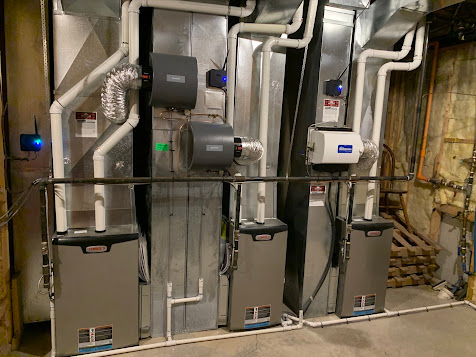Mini Gas Stations: Compact Fueling Solutions for a Growing Mobile World
Mini Gas Stations: Compact Fueling Solutions for a
Growing Mobile World
In a world where space is limited
and mobility is everything, fueling solutions must adapt. Enter the mini gas
station—a compact, self-contained fueling system designed to deliver the
same reliability as a full-scale station, but in a much smaller footprint.
These innovative units are rapidly becoming essential in rural areas,
construction zones, remote locations, and even urban environments where space
and infrastructure are constrained.
Let’s explore what a mini gas station is,
how it works, and why it’s becoming a powerful solution in today’s fast-paced
fuel economy.
What
Is a Mini Gas Station?
A mini gas station is a
portable or semi-permanent fuel dispensing unit that combines fuel storage,
pumping equipment, safety systems, and sometimes payment modules—all within a
compact, modular setup. These stations can be installed in locations that don’t
have the infrastructure for a full-size gas station, and are often designed to
run with minimal staffing or completely autonomously.
Unlike large-scale fuel stations,
mini gas stations require less space, faster installation, and lower
investment, making them ideal for both temporary and permanent use cases.
Key
Features of a Mini Gas Station
Mini gas stations are typically
designed for efficiency, safety, and flexibility. Common components
include:
- Fuel Storage Tank
Typically ranges from 5,000 to 30,000 liters, depending on use and space availability. - Fuel Dispenser
Equipped with meters, digital displays, nozzles, and sometimes multiple fuel types. - Control Panel
Used for monitoring fuel levels, managing dispensing operations, and controlling safety systems. - Power Supply
Options include connection to the grid, generators, or solar power systems. - Safety Systems
Includes fire suppression, leak detection, grounding, and overfill protection. - Optional Add-ons
Payment terminals, surveillance cameras, RFID readers, and telemetry systems for remote monitoring.
Applications
and Use Cases
Mini gas stations are used across a
wide range of industries and locations where traditional stations are either
unavailable or inefficient:
🏗️ Construction & Infrastructure Projects
Supply fuel directly to machinery
and vehicles on-site, reducing downtime and transport costs.
🛤️ Remote & Rural Areas
Provide fuel access in regions with
limited infrastructure, keeping communities and agricultural operations moving.
🏭 Industrial Facilities
Serve as a dedicated fueling hub
within manufacturing plants, warehouses, or transport depots.
🆘 Emergency & Disaster Response
Deliver critical fueling support
during power outages, floods, or emergency evacuations.
🛣️ Fleet & Transport Operations
Offer private, on-site fueling for
logistics companies and government fleets, improving cost control and
convenience.
Benefits
of Mini Gas Stations
✅
Compact and Space-Saving
Ideal for tight urban zones or
remote landscapes where full-scale stations can’t be built.
✅
Rapid Installation
Pre-fabricated, modular units can be
deployed and activated in a matter of days.
✅
Cost-Effective
Lower capital and operating costs
make them attractive for small businesses and fuel resellers.
✅
Flexible Mobility
Can be dismantled, relocated, or
upgraded as business needs evolve.
✅
Self-Service and Automation
Modern mini stations are designed
for 24/7 operation with minimal staffing.
Safety
and Compliance
Despite their small size, mini gas
stations must adhere to the same safety and environmental standards as larger
stations:
- Explosion-proof components and grounding systems
- Spill containment basins and double-walled tanks
- Emergency shut-off mechanisms
- Compliance with local fuel storage and fire safety
regulations
Leading suppliers also offer mini
stations certified to international standards such as UL, ATEX, CE, and ISO.
Visit our website https://www.fuelsstoragesolutions.com/
for more information.
Conclusion:
As industries grow more mobile and
decentralized, and as rural and remote communities seek affordable fueling
solutions, mini gas stations are emerging as a practical, scalable
answer. They combine the essential functions of a traditional fuel station with
the adaptability needed for today’s diverse environments.
Whether fueling heavy machinery on a
construction site or keeping a rural village running, a mini gas station
delivers fuel—exactly where it’s needed, when it’s needed—without the
complexity and cost of full-scale infrastructure.




Comments
Post a Comment